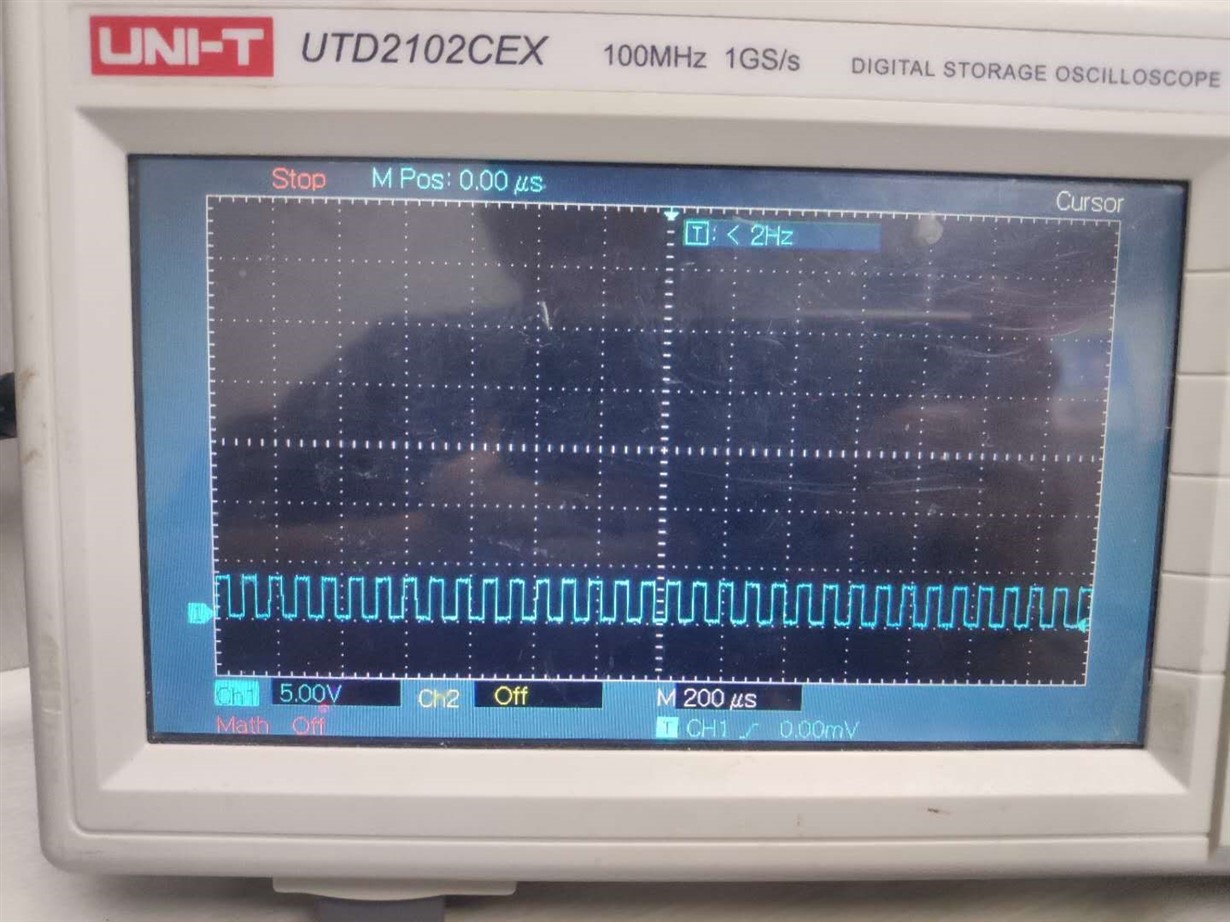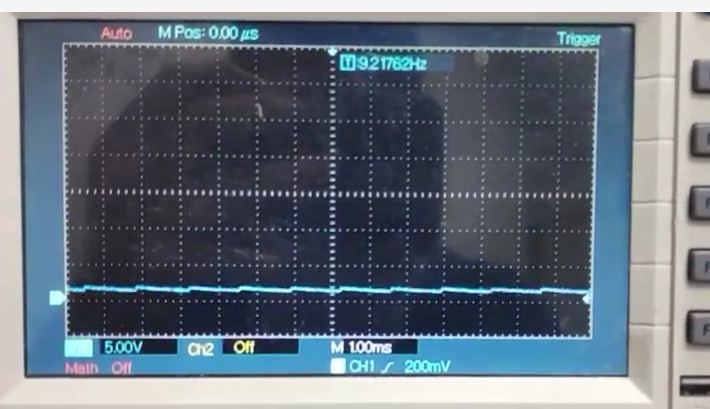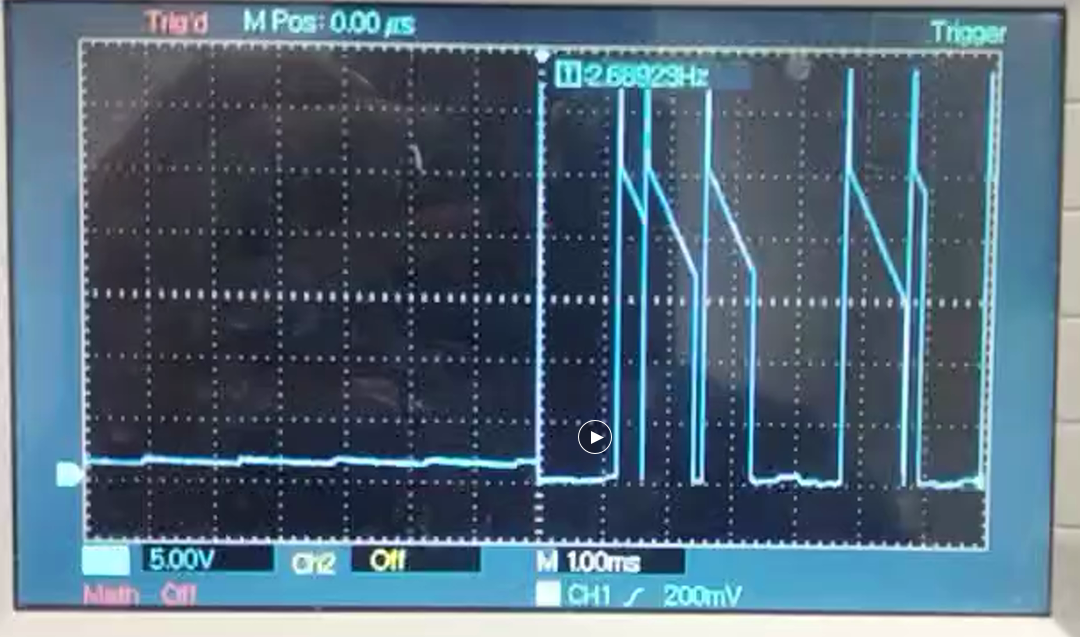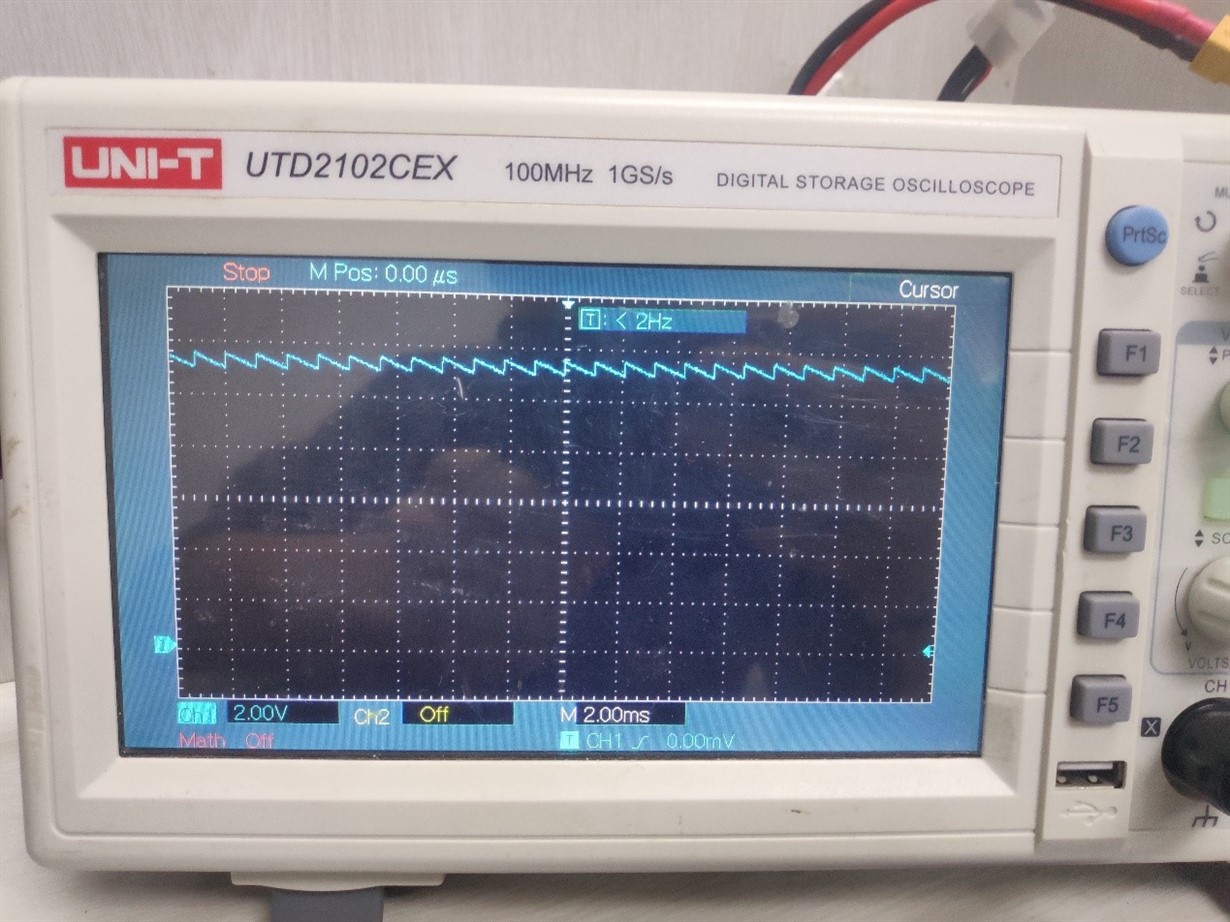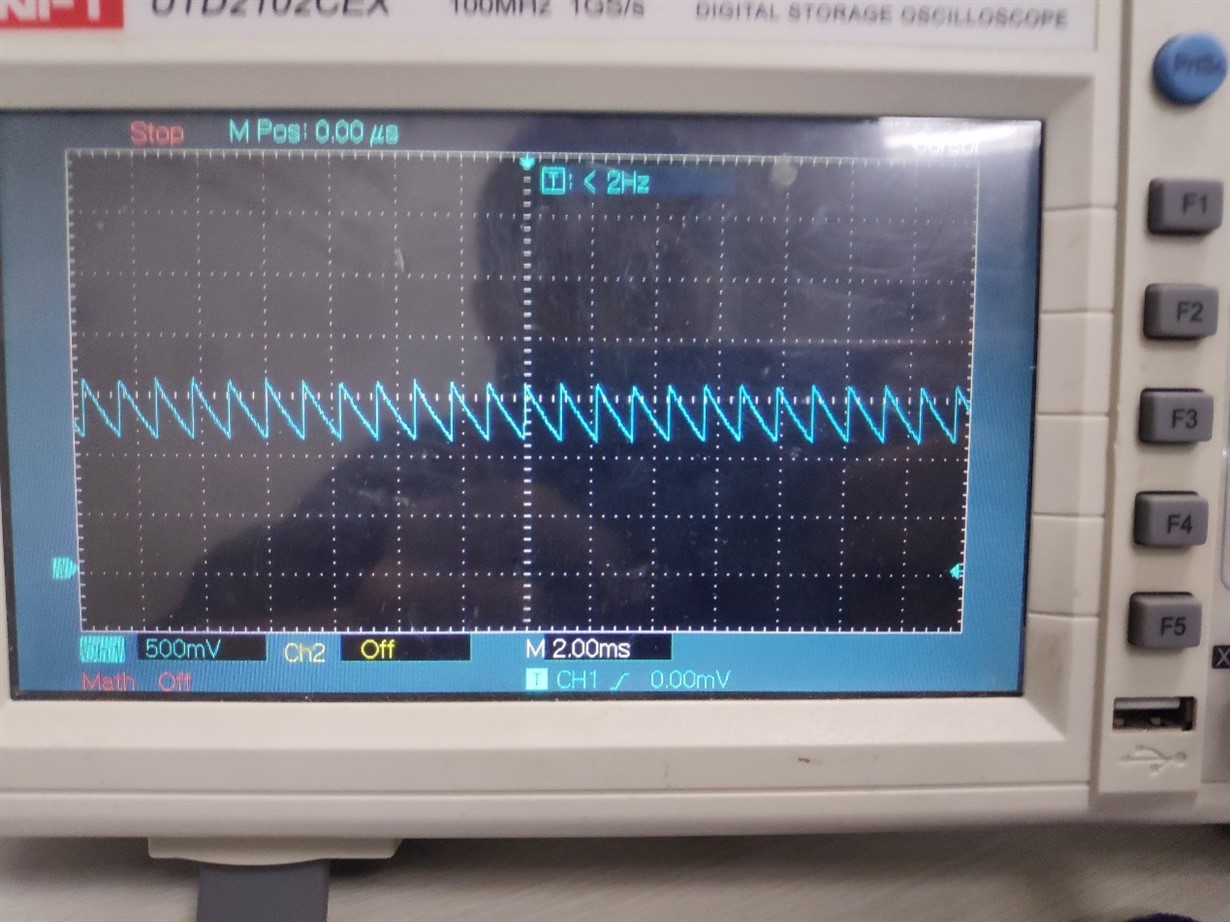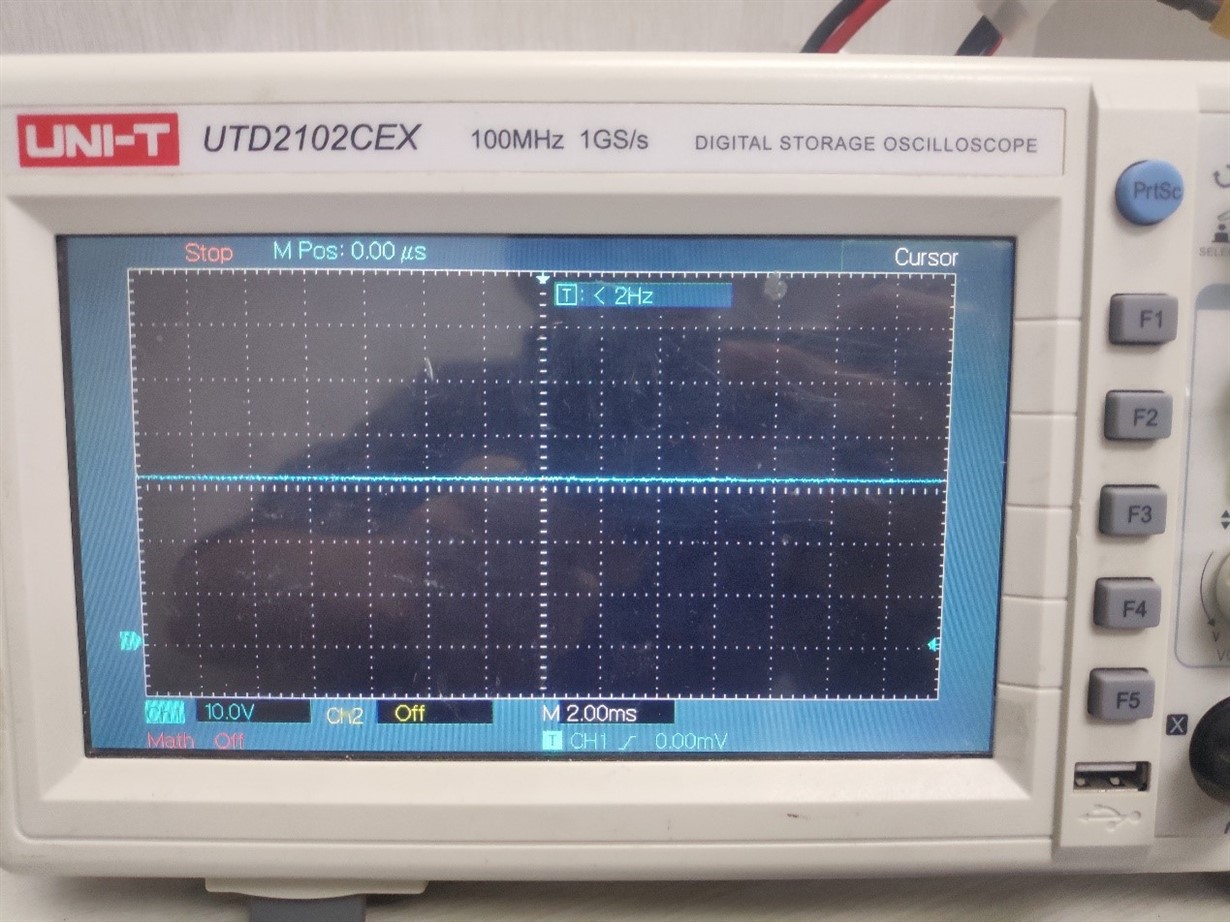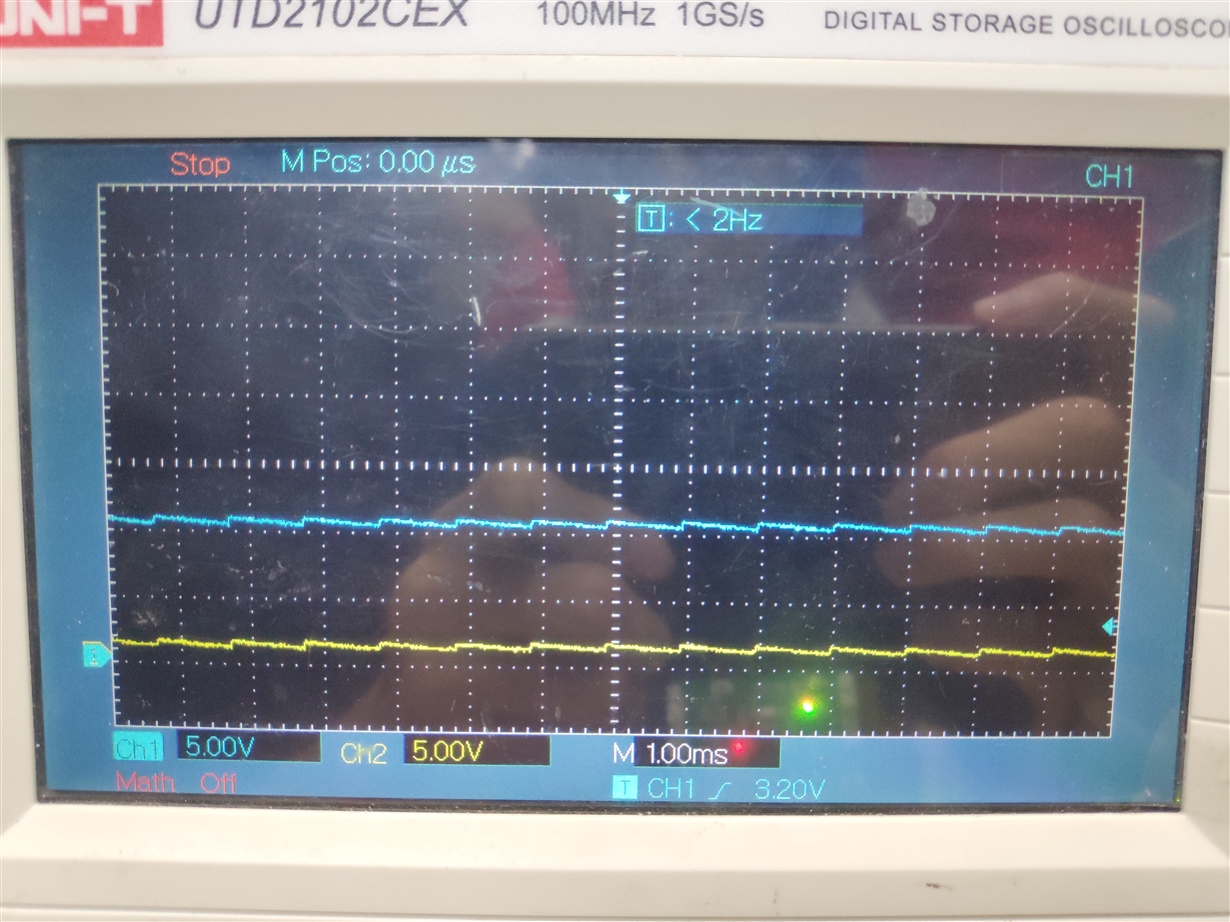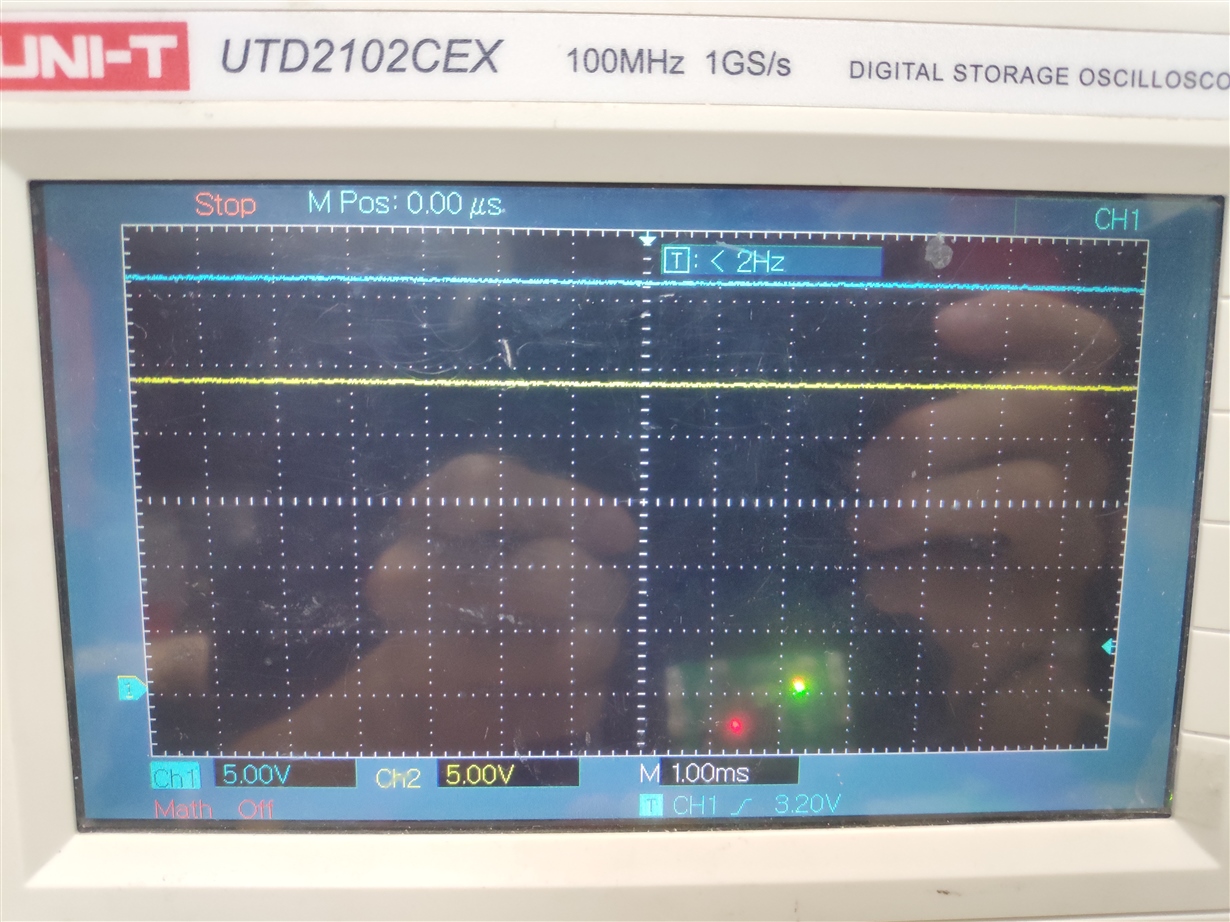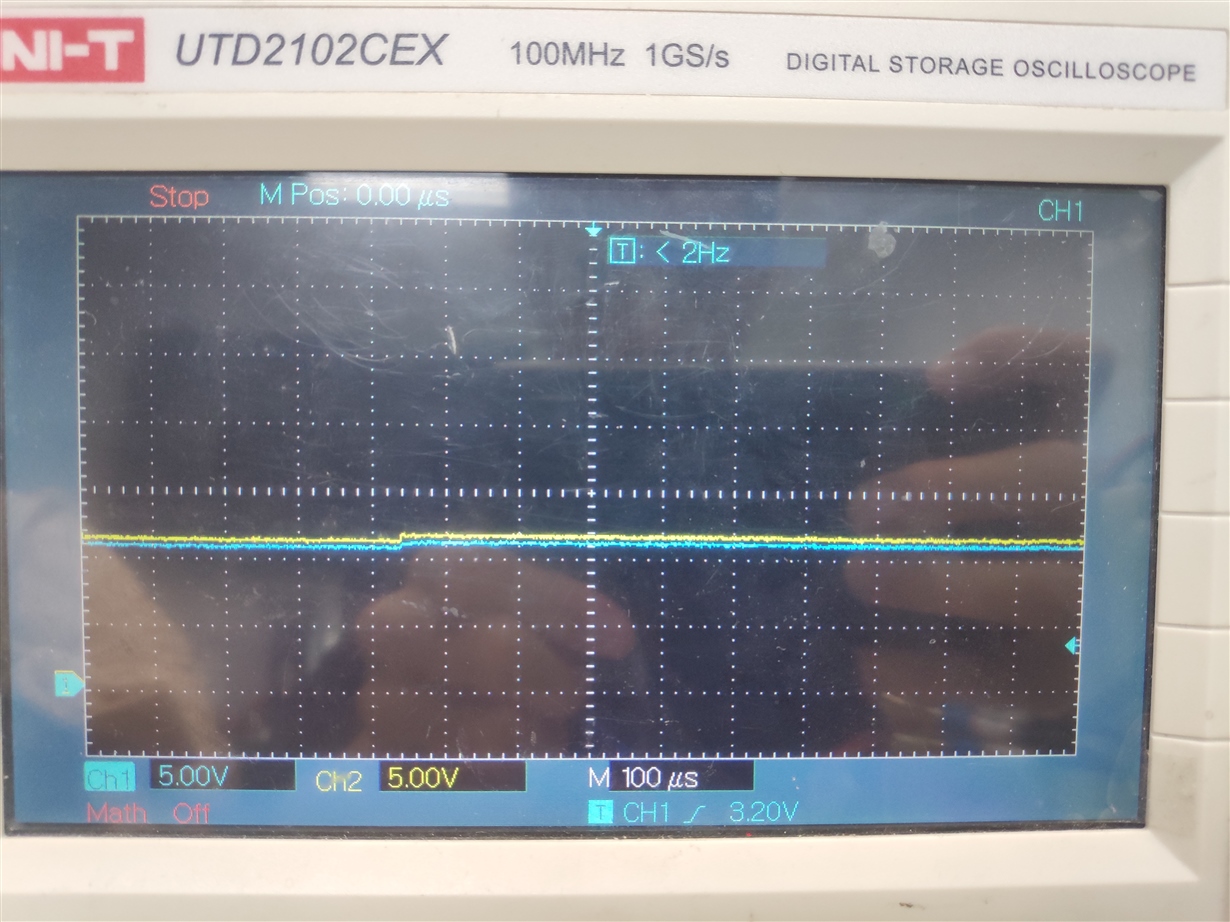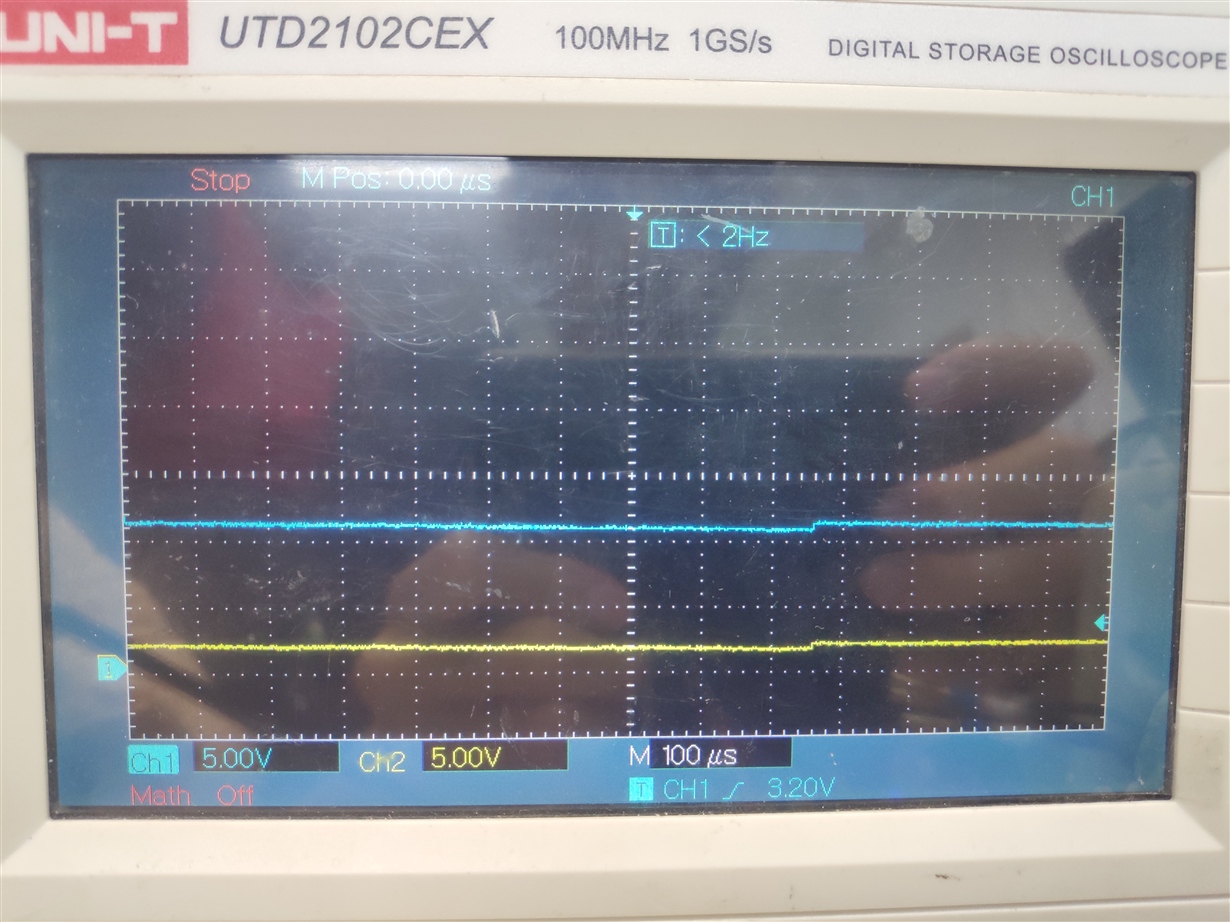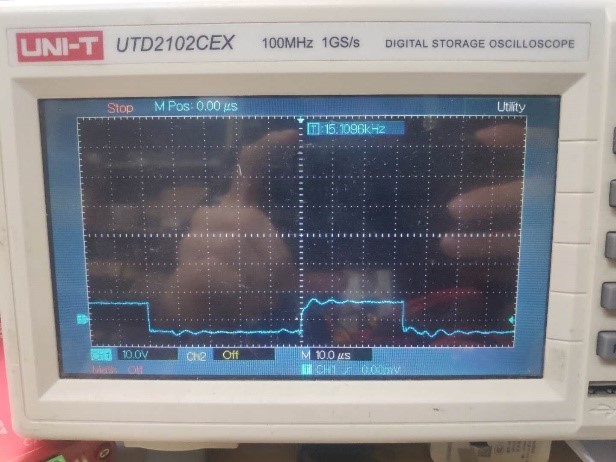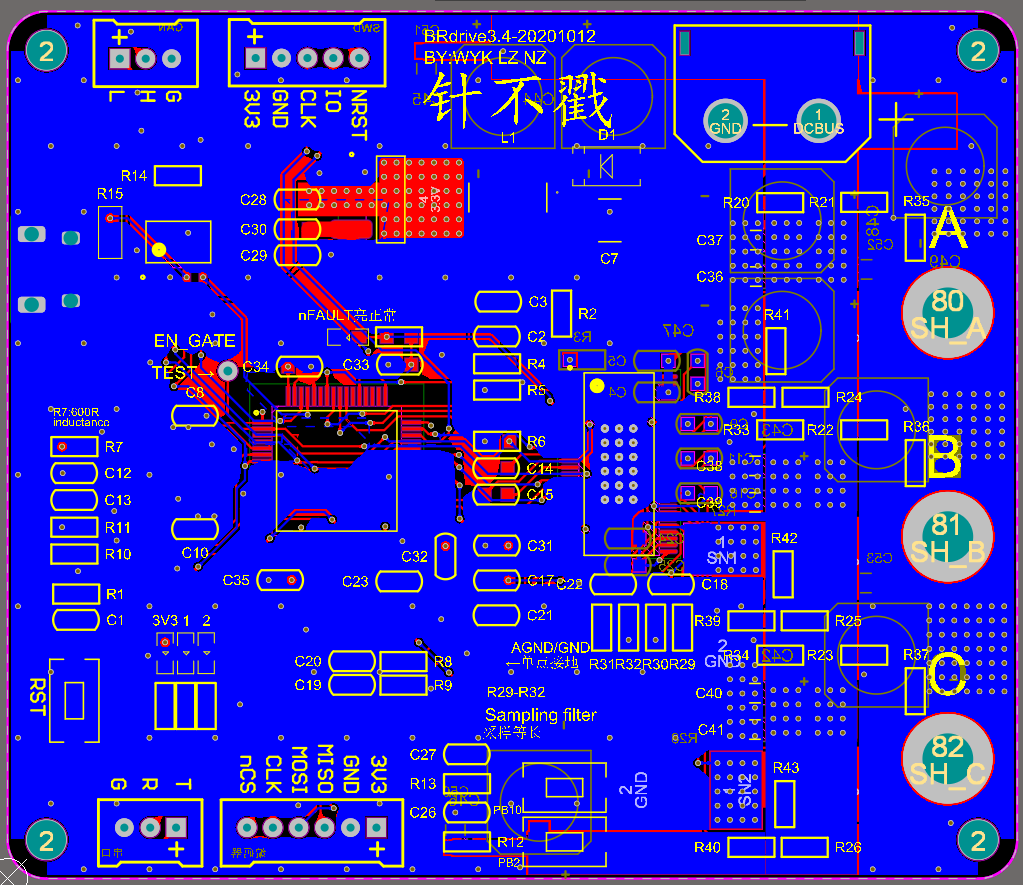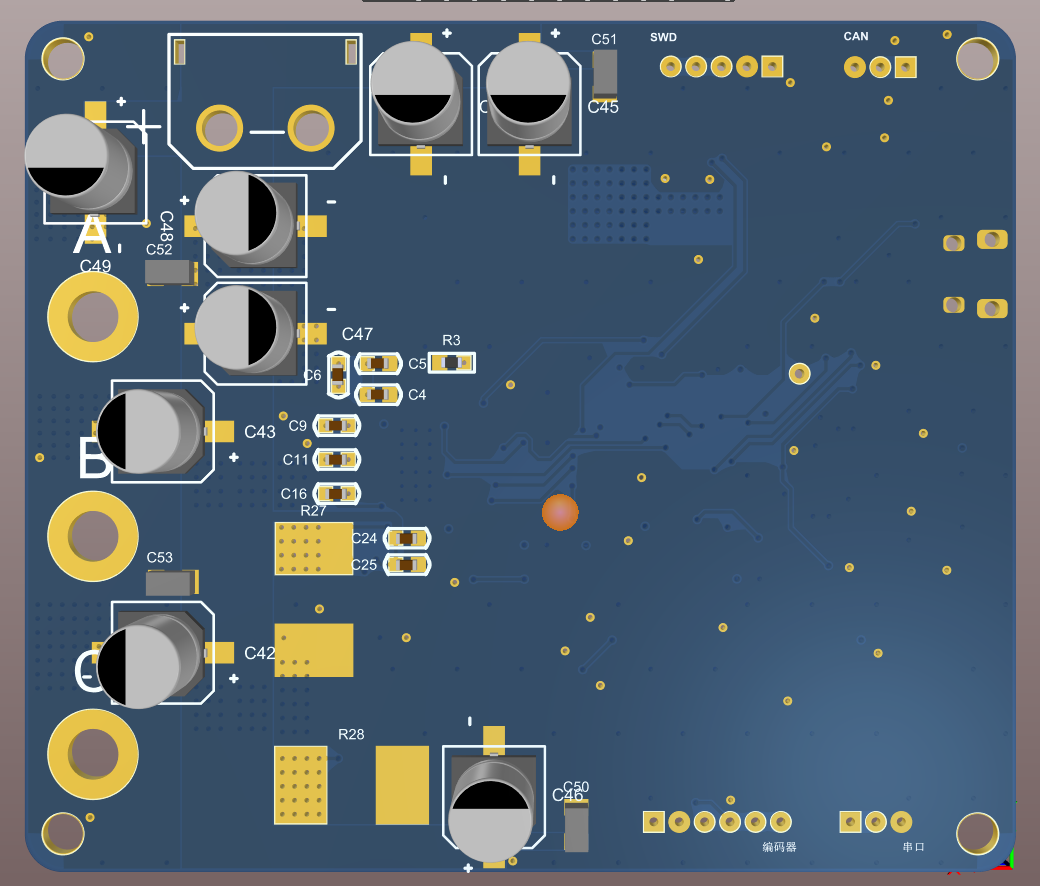We used DRV8301 to design a motor driver. Up to now, we have made some PCB. But recently the same problem occurred in three different PCB: GH_A output wrong waveform while GH_B and GH_C output the correct waveform.
Here is our schematic: (V3.4)
Here is the detail. In all the test bellow, the input voltage of AH/BH/CH was 3V3, while the input voltage of AL/BL/CL was 0V. During all these tests, the nFault were always output high voltage ( No fault were reported.).
- 1.We met this problem for the first time when we were testing one of our Driver version 3.2 PCB. (The other V3.2PCB worked correctly or occurred other problem.) The output voltage of GH_A was around 10V(We didn’t record this waveform. The GH_B and GH_C worked correctly and they were around 30V.). We removed the high-side MOSFET, half-bridge A. But GH_A is still 10V. We welded a new DRV8301 on, but the output voltage of GH_A was still around 10V. We removed the low-side MOSFET, half-bridge A. GH_A became around 1.6V(The waveform looked like the forth V3.4 PCB GH_A figure below.).
- We made a similar PCB version called V3.4. The first PCB of V3.4 worked correctly and it could drive a motor successfully. But we met the “GH_A” problem both in the second V3.4 PCB and the forth one. In the second V3.4 PCB, the GH_A/ GH_B/ GH_C were all 1.6V days ago. Today when AH/BH/CH was 3V3 and AL/BL/CL was 0V, GH_A/ GH_B/ GH_C were all 30V. But when AH/BH/CH and AL/BL/CL input PWM(figure 1), the waveform of GH_A looked like figure 2-5 (The waveform was not stable sometimes.). The waveform ofGH_B/ GH_C were similar as GH_A.
figure 1: input PWM of AH
figure 2: output of GH_A
figure 3: output of GH_A
figure 4: output of GH_A
figure 5: output of GH_A
3.In the forth V3.4 PCB, only GH_A was 1.6V. GH_B/ GH_C were 30V. (AH/BH/CH was 3V3, while AL/BL/CL was 0V.) We recorded the waveform of the forth V3.4 PCB. The waveform were recorded in the figure below.
The waveform of the forth V3.4 PCB GVDD:
The waveform of the forth V3.4 PCB GH_A
The waveform of the forth V3.4 PCB GH_B:
The waveform of the forth V3.4 PCB GH_C:




